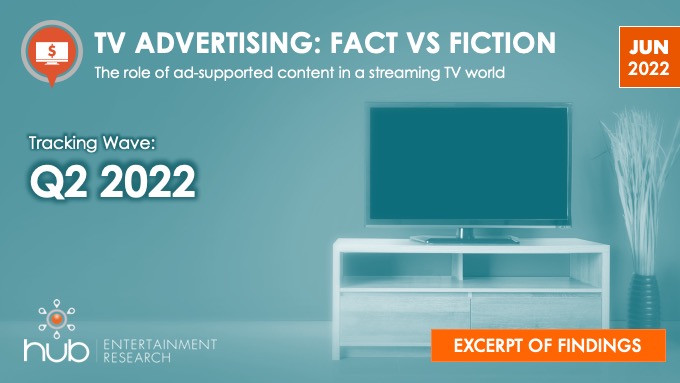After having been left for dead as consumers flocked to ad-free alternatives like Netflix, ad-supported television is returning with a vengeance….
- The list of streaming TV platforms with less expensive, ad supported tiers has been growing, with Disney+ set to join the fray later this year
- For many services offering a choice, subscription numbers are often significantly higher for ad-supported vs. ad-free tiers
- FAST viewership continues to increase year-over-year
Our 2021 waves of the TV Advertising: Fact vs. Fiction research demonstrated that—contrary to conventional wisdom—a relatively small percentage of consumers say they can’t tolerate any commercials in TV content. But many in even that supposedly “ad-intolerant” group say they’d sign up for a TV service with ads in order to save money.
When it comes to consumers’ perceptions about ads, more important than the mere presence or absence of ads is the overall value they feel they get from the viewing experience—an intricate calculation that takes into account things like ad load, length of ad breaks, ad relevance, the overall service subscription fee, etc. But when ads are delivered effectively, viewers can actually be more satisfied with the overall viewing experience—and feel more loyal to the service—than viewers of ad-free content.
The third wave of TV Advertising – Fact vs. Fiction will continue to track use, viewing behaviors, and perceptions when it comes to ad-supported TV. In the end, the goal of the study is to help TV service and content providers offer an ad experience that will maximize viewer satisfaction, engagement, and loyalty.
Source: Interviews with 3,004 U.S. consumers age 14-74 who watch a minimum of 1 hour of TV per week.
